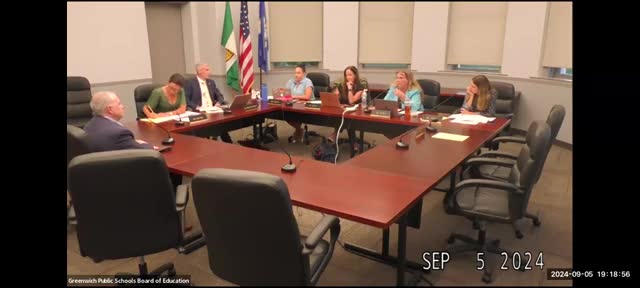Schools Revamp Schedules to Boost Literacy and Language Skills
September 05, 2024 | Greenwich School District, School Districts, Connecticut
This article was created by AI summarizing key points discussed. AI makes mistakes, so for full details and context, please refer to the video of the full meeting. Please report any errors so we can fix them. Report an error »

In a recent government meeting, education officials discussed the ongoing adjustments to school schedules and curriculum in response to the evolving demands of literacy and numeracy education. The meeting highlighted the challenges faced by schools, particularly those with International Baccalaureate (IB) programs, as they strive to balance core academic requirements with foreign language instruction.
Officials noted that the implementation of the science of reading has necessitated a significant increase in instructional time dedicated to literacy, mathematics, and science in elementary schools. This shift has led to a reduction in time allocated for foreign language classes, prompting concerns among parents and educators about the impact on students' language proficiency. However, feedback from the community, particularly from the ISD PTA, indicated a positive reception to the new schedule, with parents expressing excitement about the return of interdisciplinary time.
The discussion also touched on the assessment strategies employed to monitor student progress beyond the elementary level. Education leaders emphasized the importance of ongoing evaluation of literacy skills as students transition into middle and high school. They outlined the use of various assessments, including end-of-year evaluations and formative assessments, to identify students who may require additional support.
Concerns were raised about the lack of standardized testing in high school, with officials acknowledging that while formative assessments are regularly conducted, there is a gap in tracking students' literacy development after grade five. The conversation included suggestions for potential new assessment tools to better quantify student progress and ensure that all learners receive the necessary support.
Overall, the meeting underscored the district's commitment to enhancing educational outcomes while navigating the complexities of curriculum changes and community expectations. The officials expressed optimism that the adjustments made would ultimately benefit students, particularly in closing achievement gaps and fostering a more robust learning environment.
Officials noted that the implementation of the science of reading has necessitated a significant increase in instructional time dedicated to literacy, mathematics, and science in elementary schools. This shift has led to a reduction in time allocated for foreign language classes, prompting concerns among parents and educators about the impact on students' language proficiency. However, feedback from the community, particularly from the ISD PTA, indicated a positive reception to the new schedule, with parents expressing excitement about the return of interdisciplinary time.
The discussion also touched on the assessment strategies employed to monitor student progress beyond the elementary level. Education leaders emphasized the importance of ongoing evaluation of literacy skills as students transition into middle and high school. They outlined the use of various assessments, including end-of-year evaluations and formative assessments, to identify students who may require additional support.
Concerns were raised about the lack of standardized testing in high school, with officials acknowledging that while formative assessments are regularly conducted, there is a gap in tracking students' literacy development after grade five. The conversation included suggestions for potential new assessment tools to better quantify student progress and ensure that all learners receive the necessary support.
Overall, the meeting underscored the district's commitment to enhancing educational outcomes while navigating the complexities of curriculum changes and community expectations. The officials expressed optimism that the adjustments made would ultimately benefit students, particularly in closing achievement gaps and fostering a more robust learning environment.
View full meeting
This article is based on a recent meeting—watch the full video and explore the complete transcript for deeper insights into the discussion.
View full meeting
